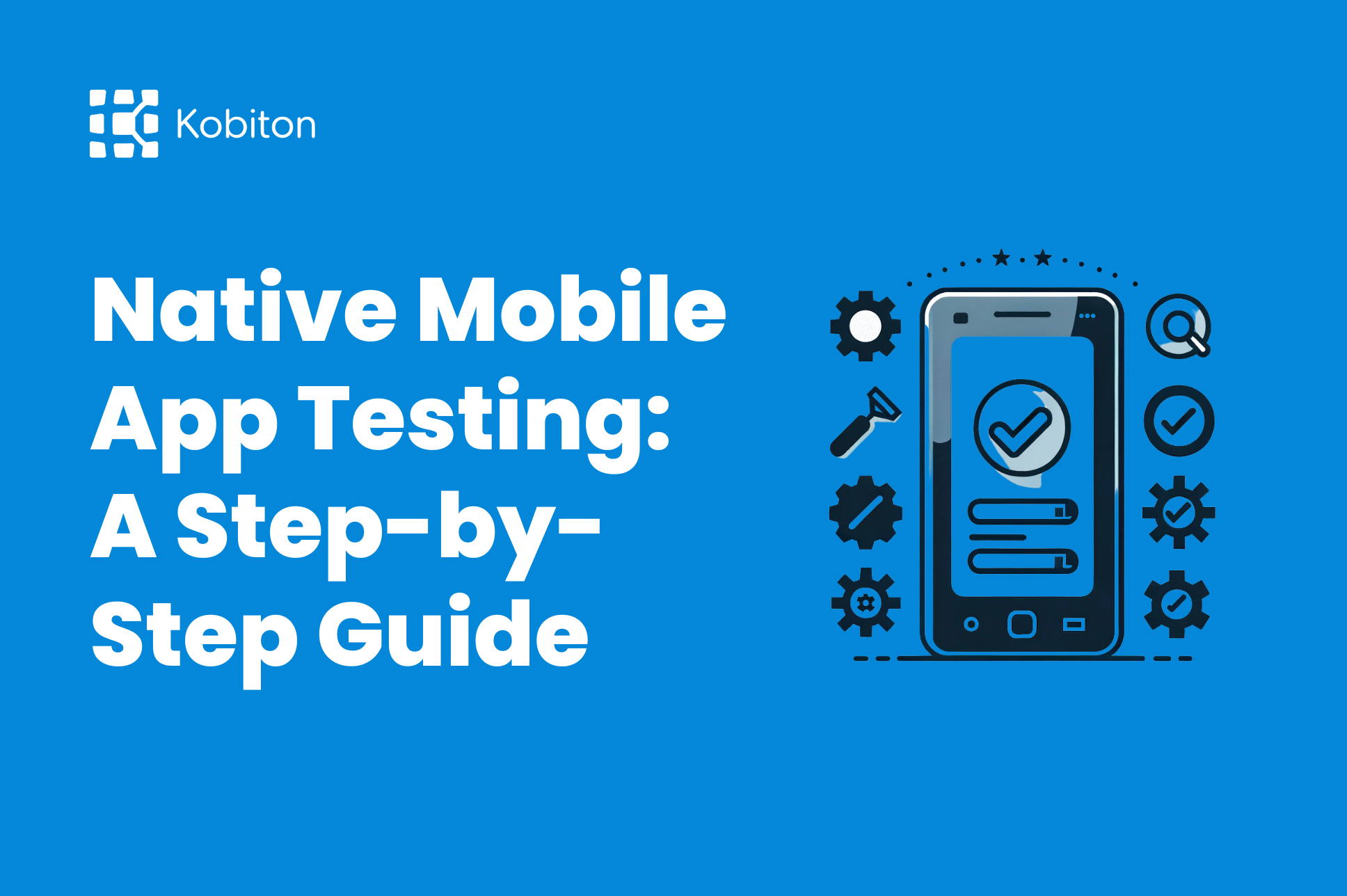
Native Mobile App Testing: A Step-by-Step Guide

Erin Bailey
Many enterprises are working tirelessly to ensure they build and distribute apps that are hassle-free. While these mobile apps play an integral part in our lives, they have to be extremely functional and remain competitive in this world where competition is everything. That’s where native mobile app testing and development come in.
The mobile native app plays an important role in ensuring the quality, usability, and security of mobile software are at their optimum. By using mobile testing, developers are able to maximize application performance and provide users with valuable apps that can keep them engaged. In this article, you’ll learn what a native app is and some of the basics of native mobile app testing and development:
Native mobile applications are smartphone applications that are designed specifically for a certain platform, such as iOS or Android. They are developed using the target platform’s native programming language, which results in better performance and user experience.
Native mobile apps also have access to device-specific features and hardware like Bluetooth or GPS. This makes them more powerful than web apps and more difficult to develop. Some of the best examples of native mobile apps include WhatsApp, SoundCloud, and Spotify.
Your testing and development teams have to work in sync with each other in a cloud environment. This can give way to more complex challenges in DevOps. However, continuous testing of digital native apps offers solutions to enable overcoming such challenges.
Organizations ensure that there’s a constant phase of development and testing by adopting the CI/CD approach. Deploying a continuous testing methodology ensures that organizations can overcome any challenges they come across in this mobile native app.
As an organization, you need to perform digital native app testing on real devices to analyze and identify problems that users face in real-time. In this technological world, people are using native digital apps in flexible, dynamic, and distributed environments. Digital native apps also help leverage different microservices since they can test every service you offer them for optimization.
By using real device testing, companies are able to identify and fix issues arising from network fluctuations, slow network problems, phone call interruptions, charger effects, and battery consumption on digital native apps. Performing real device testing also gives organizations a chance to optimize and enhance their performance by overcoming native app challenges.
Creating a testing plan for the mobile native app is a crucial step that you shouldn’t miss. Make sure you briefly describe how user-friendly the app is in terms of ease of use and intuitiveness. This involves the entire app-driven customer experience, including the identification of bugs and recommendations on how to improve your customer experience.
Developers want to test whether an end-to-end app-driven experience is world-class. In addition, you need to deploy real people to test the app’s usability on real devices so that they can quickly identify and fix usability problems before the app release. Usability testing also gives you an opportunity to view the app from the user’s experience, detect potential issues, and ensure that you have an attractive and engaging design for your target market.
Investing in a good testing tool is the best way to get a successful test at the most affordable cost. There are plenty of testing tools out there, so going for a good one is the way to go. You also need to decide whether to use native testing tools or a high-level testing framework.
Make sure you invest in a cost-effective tool that will help you conduct successful testing. Have your mobile developers contribute to your test automation effort by using native tools. If you’re relying on test engineers to create your mobile test automation, then opt for a more tester-friendly cross-platform option.
Measuring the resilience of native digital apps is becoming quite popular. This is because enterprises are able to understand how their app reacts when they encounter a failure. Several companies are using the DevOps test tools to analyze their apps’ recovery during different types of failure.
Companies are able to use this app to increase the tolerance level of their digital native apps at times of various failures. Failures are bound to happen, but when they happen, you have to be able to tackle such, and that’s where this app comes in.
Constantly monitoring various resources is very important because testers are able to identify various server resources. Unlike the traditional on-premise environment, where testers are able to identify various server resources, constantly monitoring various resources can help you with an unpredictable and dynamic nature.
With digital native apps, it becomes difficult for testing teams to keep track of different server resources. While testing a digital native app, it’s important for an organization to include a tool that can track and monitor various resources that are involved in the operation of the app.
Preparing yourself for the unexpected is always important, not only in tricky situations but also in native app testing and development. Things can go wrong when you least expect them. And your development team is not exempt from any rollback. So make sure your team working on the development of digital native apps is always prepared to use the previous version of an app in case the latest version backfires.
Digital native apps are also used in very complex environments, so it’s important for developers to consider deployment tools to make it easy to roll back to the next version in case things go south. This makes apps remain stable or faster in case of any failure.
After conducting a few manual testing sessions, you’ll detect the patterns of outcomes and the frequency you need to run a test with. After doing this, try automating the most routine ones. Also consider load testing, stress testing, and spike testing.
Make sure you select the right tool for test automation because there are a lot of tools available, and not all of them will offer the same solution. Here are some tips to consider while looking for the best automation tool:
● The testing tool you choose should support several platforms: Being constrained by testing tools can really hinder your entire testing project, so it’s important to have a wide range of platforms to manage your native testing app.
● Your tool should have rich features: A developer should have a tool that supports the recording and playback of tests. With that in mind, make sure you write your automated tests manually so that you can target the scope of the app in a more precise manner.
● Tests are reusable and change-resistant: Make sure you go for tools that are reusable and easy to maintain. This will make you save a lot of time while testing new projects.
While developing a native digital app in a cloud environment, you need to understand the importance of a particular app according to its use. This way, testers will better understand the important things they need for native app testing.
For instance, you can focus on security testing to determine whether your app is open-minded or non-accessible. This makes it important for developers to focus on the goals and infrastructure of the apps they’re developing.
Many users love apps with many exciting features and concepts. However, these several features require high power consumption, so it’s important to consider your app’s power consumption before using it. High power consumption can easily drain the batteries of your mobile devices, rendering them inconvenient to use.
Native mobile app testing and development is an essential part of the entire application life cycle. Successful testing ensures the efficient and enjoyable performance of your entire system. Successful testing and development also ensure compliance with security guidelines. If you’re looking to test your native mobile app, look no further than Kobiton’s services.
We’re a mobile-first testing platform that can deliver faster release cycles and an exceptional user experience to enterprises globally. We’re always updated on the modern trends and practices in the market. Contact us today, and let’s make your app better everywhere you go.